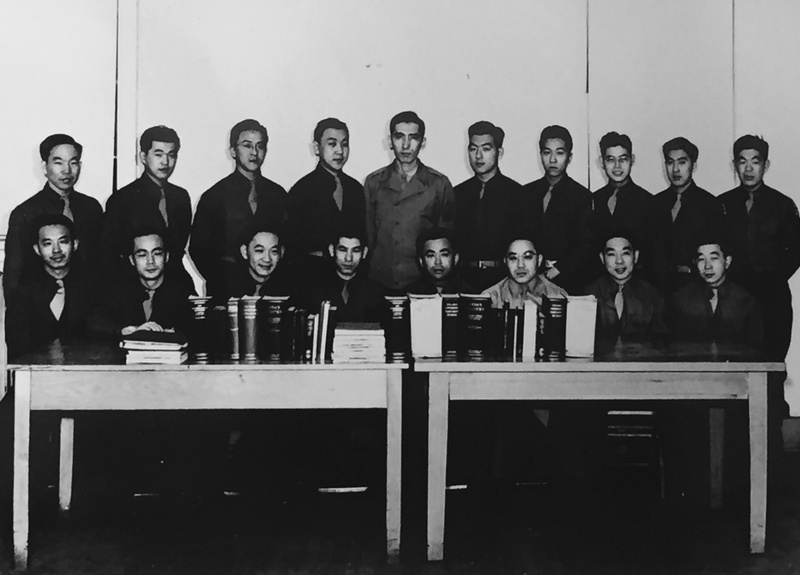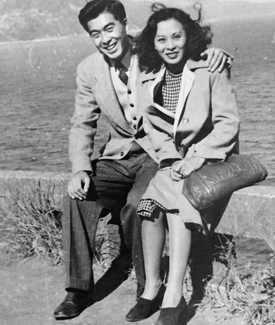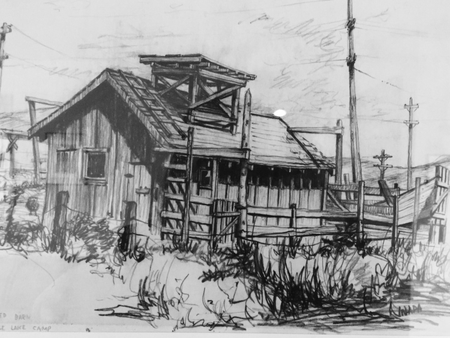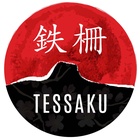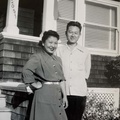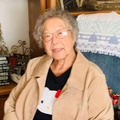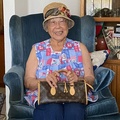That’s the reason I’ve always just got to think to myself, I don’t know what it is but everything happens to me by chance or coincidence. And I get spared.
-- Masao Tom Inada
Tom Inada believes that someone’s been looking out for him. Despite a myriad of blight situations he might have found himself in–jobless, a replacement in the highest casualty battalion in WWII or not meeting the right kind of woman who would become his wife–Tom seemed to luck out. And you can’t help but feel like he’s most deserving of his streak. He is one of the nicest people you’d ever meet.
Born and raised in Sacramento, Tom dabbled in artwork his entire life. Before the war broke out, he intended to go to art college in Los Angeles after teachers told him to cultivate his natural talent. But his aspirations were put on hold after his family was sent to Tule Lake. There, he worked for the camp newspaper in the art department and would eventually work as an artist for the U.S. army newspaper, Stars and Stripes.
Joining the military was a contentious decision: His father answered no/no on the loyalty questionnaire and wanted Tom to do the same. “I said I don’t know anything about Japan and all I know is the United States, and so yes I’ll be loyal to the United States, despite what they did.” Tom was originally drafted as a replacement for the 442nd but was instead sent to Tokyo as a translator with the Military Intelligence Service after Japan’s surrender.
Now at 95, Tom’s crystal clear memory and impeccable physical condition betray his age. He’s an avid bowler, golfer and continues to do his artwork in his home in the El Cerrito hills.
* * * * *
Can you paint me a picture of what your life was like before the war? Where were you living?
I was born and raised in Sacramento, California. I graduated from the Sacramento Junior College and when I was going there I was taking an art course. I was taking it with Mark Mizuguchi and Dick Kurihara, they were classmates. And the Kurihara family were close to us because the father was working for my father who had a fish market and he was working as a bookkeeper, so we were close. Dick Kurihara is about one or two years older than I am but our lives are similar in that we went to the same school, high school and all that. Actually, when the war happened and we were told to evacuate, my father had to get rid of all of his equipment for a dirt cheap price.
So he didn’t have any friends that offered to keep the store?
Yes, well not to keep the store. There was a Caucasian friend that used to come to the store, I think he had some police connection and he offered to keep an eye on our home, and some of the stuff that he couldn’t sell, he stored. He said that he would watch it for us. And I guess he rented the downstairs or something. I actually don’t know what happened because I didn’t get back to Sacramento because after the evacuation I got out of camp and landed in New York and found a job there.
My oldest sister, who is the famous one in the family, she was raised by my grandparents in Japan and she came back to California when she was about high school age. And she was interested in singing popular songs and all that. So at about age 17, she went to Los Angeles to try and get a recording at Columbia or something. I think she knew Ella Fitzgerald. She never did get a recording thing but did start a singing career in Japan. She would sing popular American songs and translate it into a Japanese and English version since my sister was raised in Japan she was quite fluent. And like I say, she’s the oldest and so I don’t know too much about her other than she did go to Japan.
Why was she in Japan originally?
I don’t know why but I guess my father came to the U.S. when he was only 17, and worked around and was finally able to start a fish market and I think he got married from a picture bride. My mother was from the same area in Japan. I guess because they weren’t really established, the oldest one was kept in Japan, raised by the grandparents.
So you’re in Sacramento and you were taking art classes. Is that what you wanted to do as a career?
Right. But when I graduated from Sacramento junior college I felt, or my teacher told me that I should continue going to LA where they have an art center which was more advanced but my plans were–[laughs] then the war came. So all the time I felt I wasn’t really accomplished as a graphic artist so when I went to show my portfolio they would say, “Oh it’s not quite clear enough,” and stuff like that. I guess I should tell you about getting out of camp.
Yes, so you were in Tule Lake. Did you end up there originally?
Yes right after the assembly center, we were sent by train to Tule Lake.
And you had to answer that loyalty questionnaire. And you answered yes/yes?
Uh huh, right.
And your whole family answered the same way?
No [laughs]. My family, I don’t know if they went through that but I know I went through that questionnaire business because I was male, and those two questions: were you loyal to Japan or to the U.S. and would you be willing to fight for the U.S.
My father was really influenced by the parents and all that. And the block manager, Mr. Sakayama had a son two years older than me and he had told his son to say no/no. And so my father naturally wanted me to say no/no. I told him I answered yes/yes and he said, “Why’d you do that?” We had an argument and I said I don’t know anything about Japan and all I know is the United States, and so yes I’ll be loyal to the United States, despite what they did. That was really my first argument with my dad.
And was he upset with you for a while after that?
No I don’t think so but he made me promise that I would not volunteer. But if I was drafted I would go. So when I got to Tule Lake I started to work for the Tulean Dispatch, newspaper. I was one of the three people in the art staff, there was an art department. Everything was done on mimeograph, and there would be space left above the story and we would have to cut the headlines, we would type up fonts for the style of lettering and we would have to trace on the mimeograph.
And that was all run by the internees?
Yes, they had an all Japanese section and English section on the paper. There was an editor for both. So as far as activities in Tule Lake camp, I didn’t know too much about it because I would go work at the newspaper and come back and I didn’t deal with any–they had a recreation department and they had baseball and basketball teams. But I didn’t know anything about that. [laughs]
You were just focused on doing art.
On doing my job and coming home, other than in the evening maybe I would’ve gone to one or two dances.
So then, how did you get out of camp? You said you went to New York.
Quite a few people that worked for the Dispatch said they wanted to get out, so they signed up to work on the farm or railroad. So a group of us signed up to get out. And my friends were all able to get out. And fortunately, I heard about Quakers. The Quakers offered a hostel for people to live while they looked for a job. I went to Cincinnati, and I stayed at the Quaker hostel and looked for a job. And while you were there you did housework, and they gave you board and room, no charge. Like I say, when I went to show my portfolio in Cincinnati, they’d say no, you’re not quite finished, so I couldn’t find anything.
And so there was a fellow from Sacramento also at the hostel and he had a sister in New York, married to a Japanese national. And they were never evacuated or anything so he said he was going to go to New York and he asked me if I wanted to go. So we shared a bunk in New York. I was looking for a job there.
And some kind of art job, right?
Yeah, art. I always think someone must be looking out for me because I was walking down New York, trying to find a job and this reporter that worked in the Dispatch was coming from the opposite direction and he recognized me and he called me, “Hey Mas! You looking for a job?” And I say yeah. So he told me well go call such and such an animator cartoon studio that was situated in Florida just moved to New York and they’re looking for people. So if you’re interested why don’t you go over there? Well, I didn’t know anything about animating. So I started from the bottom, which is called in-betweening.
In-betweening?
Everything in the animated cartoon was on two pegs and they lighted on the glass top with a light underneath and everything they did was they had papers that fit on two pegs. And cellophane to fit underneath. And in-betweening is where they had an animator do the sketch for the story and action would be, maybe the character was raising it’s arm. So the animator would draw the action [from where it started to where it stopped], and to make the action smooth, they would want in-between the two.
Drawings between the two hands at every level?
Right. That was the lowest paying job there. [laughs] And that studio made Little Lulu character and Popeye the Sailor.
What was the name of the studio?
Famous Studios. And because I had some art training, they said well maybe you could do the rendering for the background scene. And that was twice the amount of salary that I got. [laughs] That’s when I ended up doing the rendering of the backgrounds, worked for about two or three months. And then I got my draft notice.
And you were how old at this time?
Still 21.
So you were living in New York, with a great job and then you got a draft notice in the mail. Do you remember what it said?
Well it said you’re drafted and you’re supposed to go to New Jersey or something for your physical and all that. They ask you questions about your background. They asked me, did you go to Japanese language school in Sacramento? I said yeah I did. I think I went up to about the 6th grade in Japanese. This was all on the record.
So then I was sent to Mississippi for basic training. After we finished basic training we were lined up to embark for replacement for the 442nd. And then, so many names were called out and I was one of them. They told me that you guys are going to Fort Snelling Minnesota for Military Intelligence. Well, like I say, because I said I was trained in and background in Japanese school, I guess they have it on the record and so they sent me there. And then I heard from people in basic training, that two of my friends, on the landing in Europe, they got killed or hurt.
And then we went to Fort Snelling and finished the course there. And from there we were sent to the Philippines.
When you were drafted, what was your feeling about that moment? Even though you said yes you would serve, were you upset that you were going to leave your art career?
Well, you know, shikata ga nai. So that’s what it is, and you can’t fight it. But naturally I resented the fact that I just got a raise and all that and get drafted.
I know. That would be hard.
Yeah, but, just like anything else, you just accept it and try to make the best of it. Well, one thing came out of it. When I was in Fort Snelling, I had my three-day pass. The only people I knew in Chicago was someone named Martha, who took the same art class. So I contacted her and asked if I could see her.
It’s funny that I had a date with Martha and she told me how to get to her place and all that. And I got there, Martha comes out and says, I’m sorry, I got the mumps. [laughs]
Oh no.
So she said, why don’t you take out my cousin, Yoshiko. So I said well, okay. So we had a first date and I remember going to one of those soda places. And I was always shy about talking to girls and stuff, but when I was talking with her, she was easy to talk to and so I figured, “Man, this is the first one that I, you know, could get along and talk freely.” So, after I got sent overseas, I asked her if I could correspond with her. That’s what we were doing all the time while I was overseas. And I tell my grandkids, I must’ve been a pretty good letter writer because we more or less got engaged through correspondence.
So that was your wife?
Yeah. [laughs]
That’s a happy ending. That’s amazing. You were just comfortable.
Yeah, I guess. I don’t think she was shy with me because I know she dated other service men, you know, while she was in Chicago. She told me.
Were you guys the same age? 21?
Yeah, she’s only two years younger.
*This article was originally published on Tessaku on February 10, 2017.
© 2017 Emiko Tsuchida


